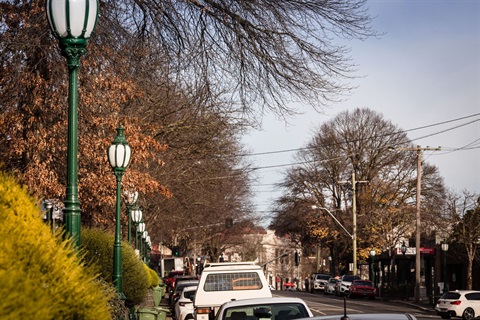South Australian households have experienced an unprecedented decline in their purchasing power over the past year. Although the dollar value of average incomes has increased, it has not risen enough to keep up with sharp increases in the cost of living.
University of Adelaide experts estimate that based on Australian Bureau of Statistics State Accounts data, South Australian households’ gross disposable incomes on a real per capita basis fell by around 7 per cent in 2022/23, marking the largest decline on record. Consequently, households are finding it increasingly difficult to sustain their spending levels.
Despite the strains on household budgets, the SA economy has continued to grow strongly, and labour market conditions remain exceptionally strong. The economy is operating at a high level of capacity utilisation, contributing to ongoing inflationary pressures. While efforts to control inflation have seen some success, inflation rates are still too high.
Household spending growth was running at quite weak levels in 2023 as a result of the squeeze on incomes. We expect household spending to remain weak in 2024 and this will lead to a slowdown in South Australia’s economic growth next year.
These insights are detailed in the latest Economic Briefing Report prepared by economists from the University of Adelaide’s SA Centre for Economic Studies (SACES).
Other highlights in the Economic Briefing Report include:
- Global growth has slowed due to tighter monetary policy and reduced fiscal support. The global recovery is anticipated to continue at a fairly modest pace in 2024.
- The Australian economy has slowed down in 2023. The primary reason for this is weak trends in households’ real spending growth. Households have tightened up their spending in response to rising living costs. The weakness is especially apparent for spending on discretionary goods and services.
- The South Australian economy grew faster than the national economy in 2022/23. This was the third year in a row that South Australia has outpaced Australia, indicating that South Australia has performed relatively better than the rest of Australia in the recovery from the pandemic.
- As was the case nationally, a weaker household spending trend has emerged in South Australia in 2023. This is a consequence of the strains on households’ budgets.
- The South Australian labour market is the strongest it has been in over 50 years. Population growth has been strong, but employment growth has been even stronger. The unemployment rate fell to 3.6 per cent in October, its lowest level since at least the late 1970s.
- Construction activity, business investment and international exports in South Australia all reached record levels in the September quarter.
- Overseas exports have grown strongly, with substantial increases in wheat and refined copper exports and a strong increase in services exports due to the return of international students and tourists.
- Exports to China have increased substantially in 2023 after turning down sharply in 2022
- Farm production is expected to diminish from last year’s record levels as El Niño brings drier conditions and as commodity prices ease from high levels.
Mr Jim Hancock, Executive Director, South Australian Centre for Economic Studies, the University of Adelaide, says: “Although progress has been made in reducing headline inflation, core inflation remains high. While wages have a substantial amount of catching-up to do, the Reserve Bank will be determined not to let this feed into ongoing inflation. This suggests that policy interest rates are not likely to decrease much, if at all, over the coming year.”







